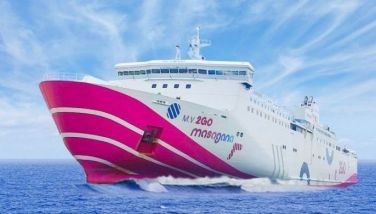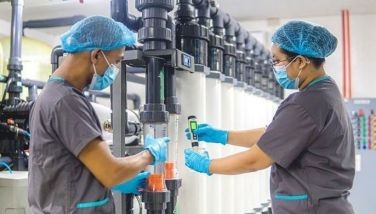The ‘People’s Pope’ is here!
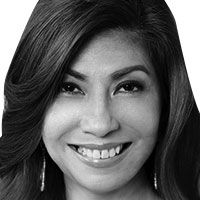
He is a holy “rock star,” a prince as well as a pauper, a priest as well as a pilgrim, a Rolling Stone magazine cover boy (now, how cool is that?).
He has been called the “new Nelson Mandela” as far as providing a moral compass to the world is concerned, and “Lolo Kiko” (by Filipinos who were smitten by him at first sight at the Vatican, and to which he replied that he was too young to be called “lolo” or grandfather).
The leader of the world’s 1.2 billion Catholics, the first pope from Latin America, the first Jesuit, and the first to go by the name of Francis, the 78-year-old Pope arrives today in the land of “people power” for a mission of mercy and compassion.
“It is assuring and comforting to realize that the Pope cares about us, that he shares with us whatever we experience in all the different mysteries of our life, whether they be joyful, luminous, sorrowful or glorious. Knowing that the Pope is in our midst lifts up our spirits, renews our faith and makes us hopeful and grateful persons,” says former Don Bosco parish priest Fr. Manny Domingo.
In 1986, the Philippines became known for a bloodless people-power revolt — with the blessings of several churchmen including the influential Archbishop of Manila Jaime Cardinal Sin — that toppled a 20-year-old dictatorship. So you could say the “People’s Pope” will be coming home to the land of people power.
The Philippines, the third biggest predominantly Catholic country in the world (the other two being Brazil and Mexico) and one of only two predominantly Catholic countries in Asia (the other being East Timor), and the only one in Southeast Asia, is expected to give the “People’s Pope” a rousing welcome. There are some 76 million Catholics in the Philippines, representing 80 percent of the population.
According to Guinness World Records, the last time a pope visited the Philippines (John Paul II in 1995), it was the biggest human gathering in history, with five million people gathering to see him at the Rizal Park and hear him celebrate Mass during World Youth Day.
According to organizers of the visit of Pope Francis, “Modern popes have made it a point to make the long journey to Catholic Philippines, bastion of Christianity in Southeast Asia, at least once in their pontificates. The country has so far been blessed with three papal visits in a span of 25 years. In 1970, Pope Paul VI (now Blessed) came as a missionary pope and visited the slums of Manila. A decade later, Pope St. John Paul II came to raise the Philippines’ proto-martyr, Lorenzo Ruiz, to the ranks of the ‘Blessed.’ St. John Paul II returned in 1995.”
For Filipinos, papal visits are a source of joy, strength, and most importantly, hope. For my husband Ed, Jesuit-educated like Francis but a little less holy, the Pope’s visit is a time for a “renewal” of his faith. For me, it is a reinforcement of my faith, which is my moral guidepost.
The Pope’s visit is a soothing balm for the victims of typhoon Yolanda, for they are the top priority of his visit, which is anchored on the theme, “Mercy and compassion.”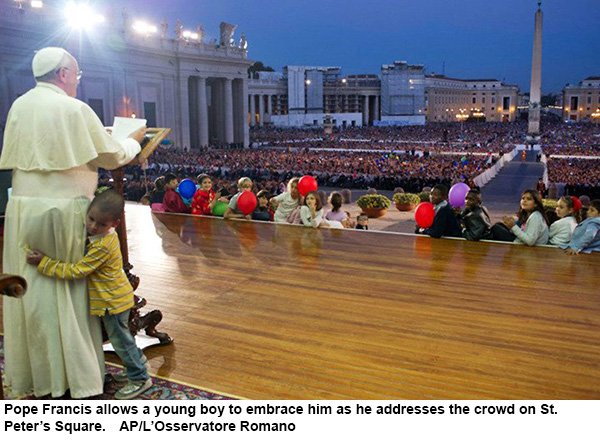
Fr. Manny Domingo also sees Pope Francis I’s visit, “as that of a shepherd desiring to be one with his flock especially at a time of our greatest need — after a series of natural and man-made calamities...”
PCSO acting chairman and general manager Jose Ferdinand Rojas says, “As a government servant, Pope Francis is a reminder that we are here to serve our fellow Filipinos wholeheartedly and with compassion.”
The papal visit press center will be at the Diamond Hotel, which is almost fully booked for the next few days. Its GM Vanessa Suatengco says this is a great “honor.”
PeopleAsia managing editor Jose Paolo Dela Cruz believes the Pope’s visit transcends religion.
“The Pope is an inspiration to both Catholics and non-Catholics. Here is a man who inspires you with his knowledge, his lack of hubris and genuine concern. Even though I’m not Catholic, I somehow value his pieces of advice — they seem simple, relevant and non-discriminating,” says Paolo.
“Especially in these trying times, the Pope’s visit is timely and significant because he is the leader that many are looking for. He is someone who has consistently shown humility and compassion, and I believe, like many others, that he is someone who can inspire, enlighten and shepherd those who have lost their way,” says the magazine’s associate editor Kristel Dacumos-Lagorza, a young practicing Catholic.
Argentine diplomat Miguel Realmonte, who met the Pope when he was still Archbishop of Buenos Aires, remembers him as “very humble and simple but articulate like the Jesuits.”
In our beloved country, people power has worked miracles. May the people power spawned by the visit of the “People’s Pope” effect a change in our hearts long after the euphoria of the visit, and well into the recesses of our hearts.
Getting to know Pope Francis I
Fr. Jorge Mario Bergoglio was born in Buenos Aires, the capital and largest city of Argentina, on Dec. 17, 1936. His father, Mario Jose Francisco Bergoglio, was an Italian immigrant.
According to the organizers of the visit, here are 10 things you need to know about Pope Francis:
1. Pope Francis is a pope of many “firsts.” He is the first to take the name “Francis,” after Francis of Assisi, the itinerant friar and great saint of the poor and the downtrodden. He is the first pope from the Americas, having been born and raised in Argentina by Italian immigrants. He is the first pope from the Society of Jesus, founded by St. Ignatius of Loyola, that produced great evangelizers and reformers. Finally, he is the first pope to have been ordained priest after Vatican II, the ecumenical council that modernized the Church.
2. Pope Francis sees himself as a sinner. Yes, a sinner just like anyone, but one whom the merciful Lord had looked upon and called to a life of service. His religious experience can be summed up by his motto: Miserando atque Eligendo. Its English translation is “By Having Mercy and by Choosing Him.”
3. Pope Francis believes the Church should be more like a “field hospital after battle,” with bishops serving as true pastors and priests spending more time in confessionals, consoling wounded souls.
4. Pope Francis wants to keep it simple but “cannot live without people.” Limousines are simply not the cup of tea of this frugal pope, who rode commuter trains as bishop in his native Buenos Aires. To this day, the Pope carries his own briefcase, and he has kept his old ring as well as the silver pectoral cross he has used since being created cardinal in 2001. Much has also been written about the Holy Father’s decision to live at Casa Santa Marta, the Vatican residence for visiting clergy, rather than at the Papal Apartments in the Apostolic Palace. Pope Francis clarifies that the living quarters of his predecessors, while large and tastefully decorated, are not luxurious. The reason for not moving into the palace was simply to be able to meet people. He tells Fr. Spadaro: “I cannot live without people. I need to live my life with others.”
5. Pope Francis only has the deepest of affections for Pope Emeritus Benedict XVI, his “brother” who now lives in a monastery at the Vatican.
6. Pope Francis is a reformer; he is not afraid to shake things up. The Holy Father proceeded with reforms at the Institute for the Works of Religion (known as the Vatican Bank) that began under his predecessor Benedict XVI. In February 2014, he established a new office, the Secretariat for the Economy, which will serve as the Vatican’s financial watchdog.
7. Pope Francis says “no” to an economy of exclusion.
8. Pope Francis warns Christians against falling into the trap of spiritual worldliness, which is “self-centeredness cloaked in an outward religiosity bereft of God.”
9. Pope Francis is a fervent devotee of the Blessed Mother.
10. Pope Francis is a son of the Church. But Pope Francis has made it clear: the position of the Church on pressing moral issues is his position as well. “I am a son of the Church,” he exclaims. But in the present times, he says, there has to be concern over “concrete needs” and the Gospel making a real impact on the faithful.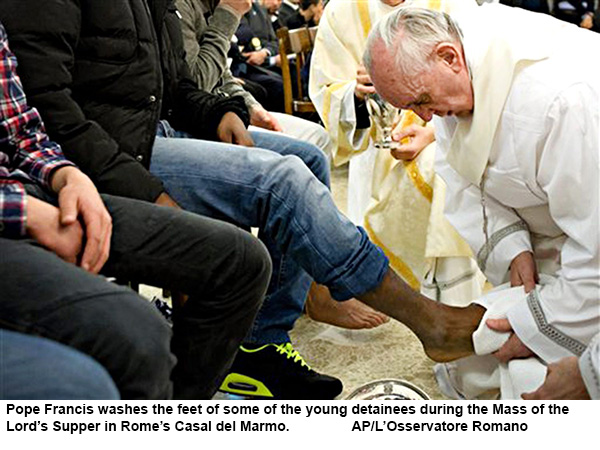
(You may e-mail me at [email protected].)
- Latest







